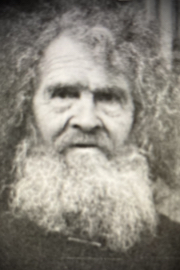British Colonial Period [1763-1780]
British Colonial Period [1763-1780] ray Wed, 04/21/2010 - 12:30- 307 views

The Treaty of Paris often called the Peace of Paris, or the Treaty of 1763, was signed on February 10, 1763, by the kingdoms of Great Britain, France and Spain, with Portugal in agreement.
Together with the Treaty of Hubertusburg, it ended the French and Indian War or Seven Years' War.[1] The treaties marked the beginning of an extensive period of British dominance outside of Europe.[2] While the bulk of conquered territories were restored to their pre-war owners, the British made some substantial overseas gains at the expense of France and, to a lesser extent, Spain.[3]
Preferring to keep Guadaloupe, France gave up New France [Canada] and all of its claims to the territory east of the Mississippi River to Britain.
Spain ceded Florida to the British, but later received New Orleans and French Louisiana from France; Manila and Cuba were restored to Spain.
France retained Saint Pierre and Miquelon and recovered Guadelupe, Martinique, and Saint Lucia in exchange for Dominica, Grenada, Saint Vincent and the Grenadines, and Tobago going to the British.
In India, the French lost out to the British, receiving back its "factories" (trading posts), but agreeing to support the British client governments, as well as returning Sumatra and agreeing not to base troops in Bengal. The British garrison on the Mediterranean island of Minorca was returned to her control, having been captured by the French at the outbreak of hostilities in Europe.
Britain returned the slave station on the isle of Gorée to the French, but gained the Senegal River and its settlements. Britain agreed to demolish its fortifications in Honduras, but received permission from Spain to keep a logwood-cutting colony there. Britain confirmed in the treaty the rights of its new subjects to practice the Roman Catholic religion[4] and received confirmation of the continuation of the British king's Hanoverian right as a Prince-elector of the Holy Roman Empire.
1767
Bienville died at Paris. Buried Montmarte Cemetery.
1768
In June 1768, George A. Gauld (1732-1782), a Scottish cartographer and surveyor, in the employ of the British Admiralty, made a map of coastal Mississippi. He was operating from HMS Sir Edward Hawke. During his reconnaissance and charting of the region, Gauld made many observations about Horn Island. He discovered that it was some sixteen miles in length, but in width no more than one mile. Orientation was nearly east-west. As regards to vegetation, Gauld noted that there were uneven groves of trees on the west end of the island. The middle was characterized by dense growth, and the eastern end of the sand bar was fairly devoid of tree growth.(Ware, 1982, p.107)
In June 1768, George A. Gauld (1732-1782), a Scottish cartographer and surveyor, in the employ of the British Admiralty, made a map of coastal Mississippi. He was operating from HMS Sir Edward Hawke. During his reconnaissance and charting of the region, Gauld made many observations about Horn Island. He discovered that it was some sixteen miles in length, but in width no more than one mile. Orientation was nearly east-west. As regards to vegetation, Gauld noted that there were uneven groves of trees on the west end of the island. The middle was characterized by dense growth, and the eastern end of the sand bar was fairly devoid of tree growth.(Ware, 1982, p.107)
1776
On July 4, 1776, the thirteen American colonies declared their independence from Great Britain.
1779
In June 1779, Spain declared war on Great Britain. In September, General Bernado de Galvez (1746-1786), Spanish governor of the Louisiana Territory, captured Fort Bute at Manchac, Louisiana; the English garrison at Baton Rouge, Louisiana; and accepted the surrender of Fort Panmure at Natchez.